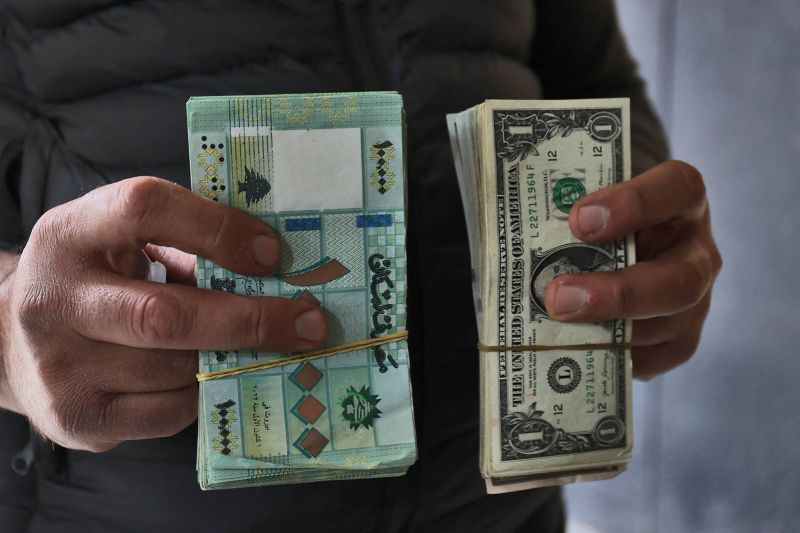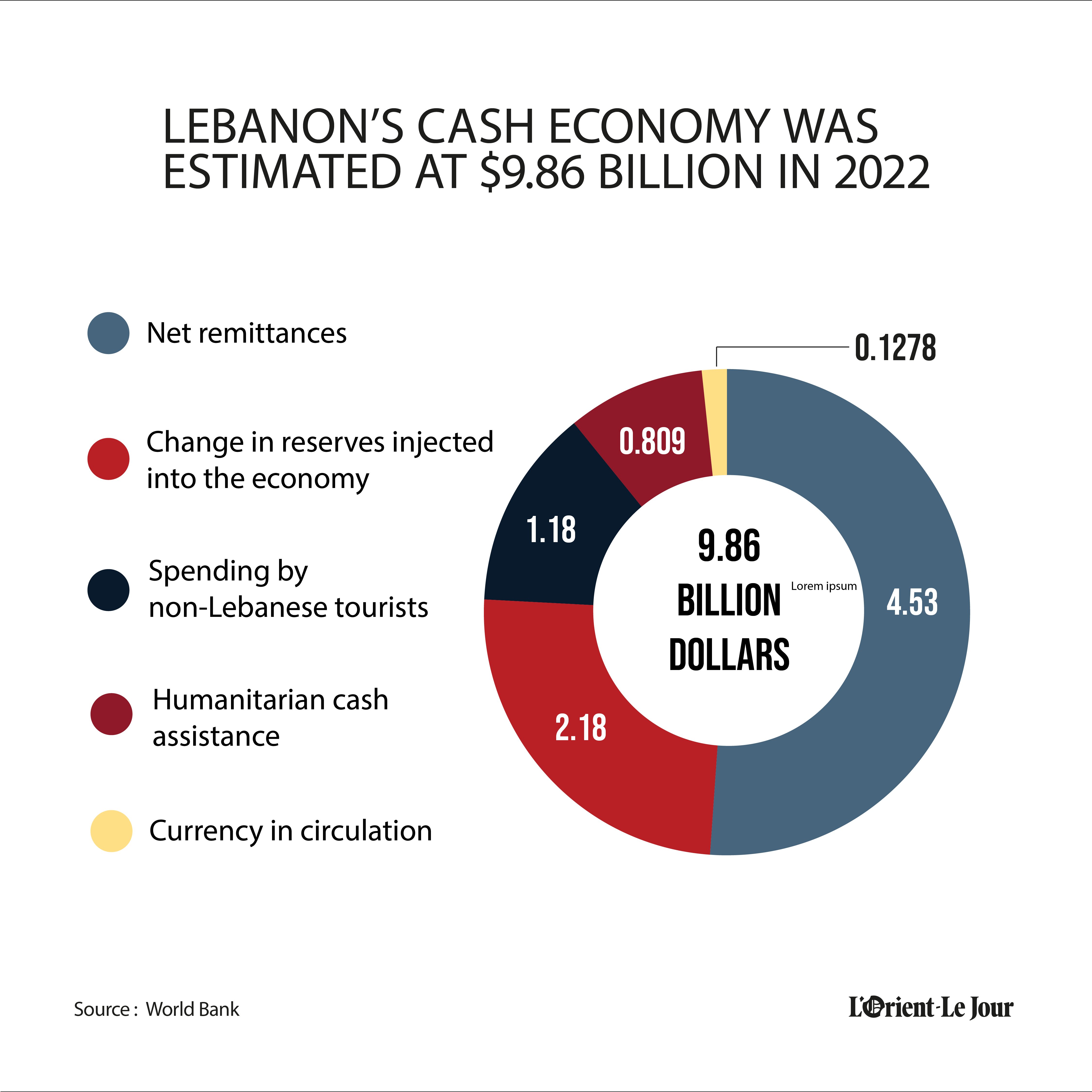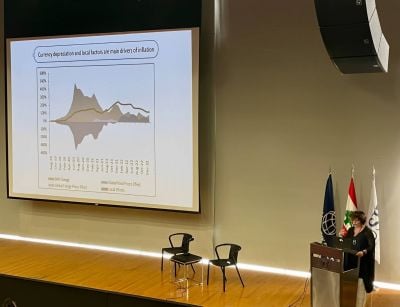
A parallel market currency dealer holds US dollars and Lebanese lira bills in Beirut on March 14, 2023. (Credit: Anwar Amro/AFP)
This is the month of economic reports on Lebanon.
After the Institute of International Finance (IFI) published its report on Friday and Bank Audi issued its report on Saturday, it is the World Bank’s turn to review the country’s economic situation in its latest biannual publication, the Lebanon Economic Monitor.
Presented during a conference held at St. Joseph University, the spring issue, titled “Normalization of the crisis is not a path to stabilization,” devotes an entire chapter to the cash economy, i.e., all transactions conducted in cash on Lebanese territory.

The World Bank noted that this cash economy has been growing since the economic crisis began in 2019, due to the “systemic failure of Lebanon’s banking system and the collapse of the currency.”
While Lebanon does not have official data measuring this cash economy, the organization estimated that it accounted for $9.86 billion in 2022, or 45.7 percent of the GDP of that year ($21.57 billion, according to our calculations).
The World Bank also found that this proportion increased significantly in three years, estimated at $4.5 billion in 2020 (14.2 percent of the GDP) and $6.06 billion in 2021 (26.2 percent). This makes for a 35 percent increase in the size of the cash economy between 2020 and 2021, and 63 percent increase between 2021 and 2022.
According to the international institution, the cash economy “heightens the risk of money laundering, increases informality, and prompts further tax evasion.”
Sharp decline in non-resident withdrawals
The World Bank also listed the assorted components of the cash economy it has taken into account, dividing them into two broad categories.
The first is withdrawals by residents and non-residents from bank accounts. They totaled $819 million in 2022, down 35 percent from $1.261 billion in 2021. A large majority of these withdrawals were made at a rate much lower than the value of the deposits due to the banking restrictions in place and which Banque du Liban (BDL) reinforced through its circulars.
It is noteworthy that withdrawals made by non-residents decreased by almost half. While they represented 41 percent of total withdrawals in 2021, they amounted to only 23 percent in 2022, according to our calculations.
The second category comprises all other sources of cash, including:
- Currency in circulation, which decreased from $926 million in 2021 to $809 million in 2022.
- Net remittances, which represent the bulk of the cash economy, and which increased from $4.25 billion to $4.53 billion.
- Change in reserves injected into the economy, without including those used to pay for imports (transferred through banking channels) rose from $1.81 billion to $2.18 billion.
- While all indicators seemed to point to the contrary, non-Lebanese tourist spending decreased from $1.46 billion to $1.18 billion (Lebanese visitors are included in the other categories).
- Humanitarian cash assistance almost tripled from $127.8 million in 2021 to $340 million in 2022.
- Finally, to obtain the total for 2021, the World Bank subtracted $3.77 billion which left the country through “capital flight.” In the report, the World Bank explains that “net errors and omissions of the balance of payments for 2021 are assumed to be indicative of capital flight and are thus deducted from the US$ cash economy for that year.”
This article was originally published in French in L'Orient-Le Jour. Translation by Joelle El Khoury.
